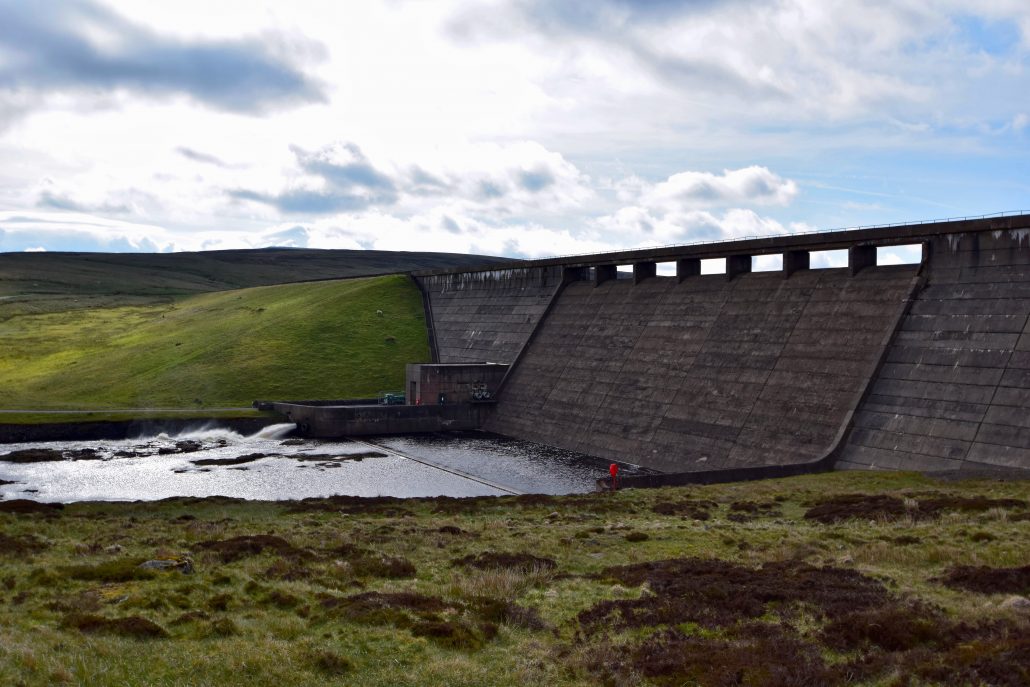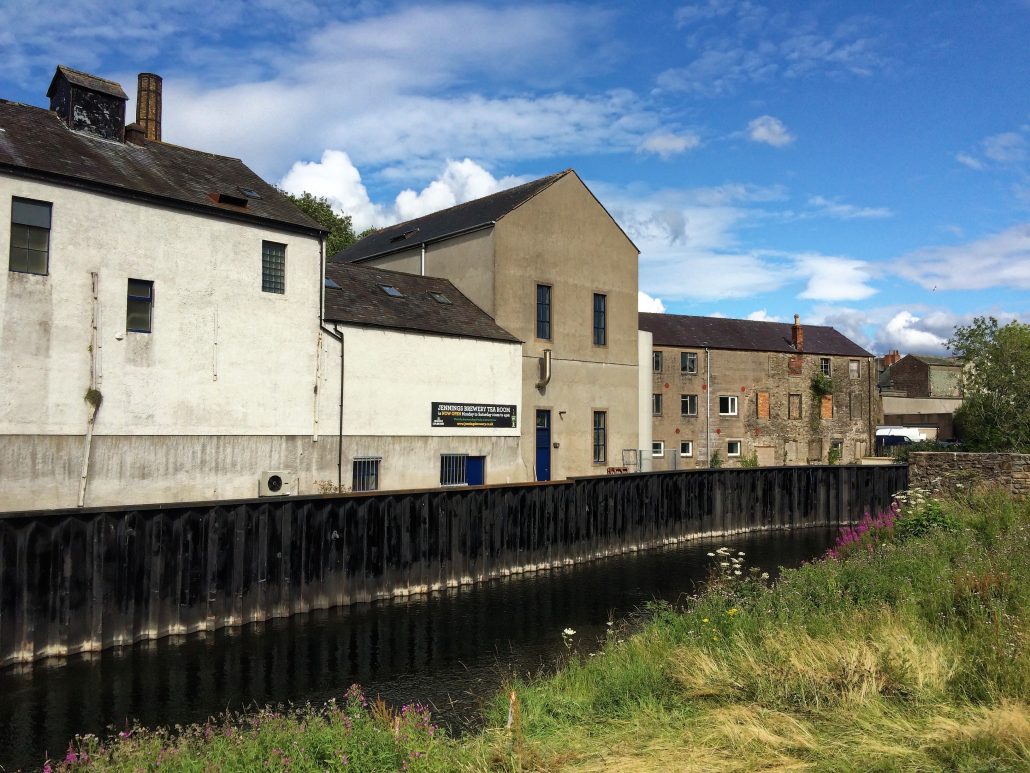Hard Engineering River Management
Hard engineering management of rivers involves the construction of structures, built to control the flow of water and reduce flooding.
Hard engineering river management involves the construction of structures built to control water flow and reduce flooding.
A large wall is built across a river, usually in the upper stages. The land behind the dam is then flooded, forming a reservoir.

The dam at Cow Green Reservoir, River Tees.
Advantages
Reservoirs store a significant amount of water, which helps reduce the risk of flooding, particularly during heavy or prolonged rainfall. As water flows through the dam, it can be used to generate electricity. Storing water in reservoirs ensures a constant flow even during periods of dry weather.
Disadvantages
To create the reservoir, large areas of land need to be flooded. This can lead to people being displaced (having to move away). Dams are costly to create. Sediment, transported by the river from the upper stages, is deposited in the reservoir, reducing the river’s velocity. This means less sediment is deposited further down the course of the river, which could reduce soil fertility on the floodplain.
Straightening involves changing the course of the river. This involves straightening the channel by cutting out meanders.
Advantages
Straightening allows water to flow along the course of the river more quickly. This reduces the risk of flooding.
Disadvantages
As water is travelling faster, there is an increase in the risk of flooding further downstream. In addition, as the water flows faster, the erosion rate will increase. Unless the river banks are reinforced, the natural flow of water will cause meanders to form again in the future.
This involves building up the banks of the river. This could be by creating levees or building walls. The image below shows embankments at Cockermouth. They were created to reduce the risk of flooding.

Flood defences at Cockermouth
Advantages
The river channel can hold more water, which reduces the risk of flooding.
Disadvantages
Embankments are expensive to install. Also, if the embankment fails, the surrounding area will be rapidly flooded.
Flood relief channels are artificial channels created to divert water around or from important locations if a river is at risk of flooding.
Advantages
River discharge is reduced, which means the risk of flooding is decreased.
Disadvantages
There will be an increased risk of flooding where the flood relief channel re-joins the river. If bankfull capacity is reached in the flood relief channel, it will flood the surrounding area.
Use the images below to explore related GeoTopics.